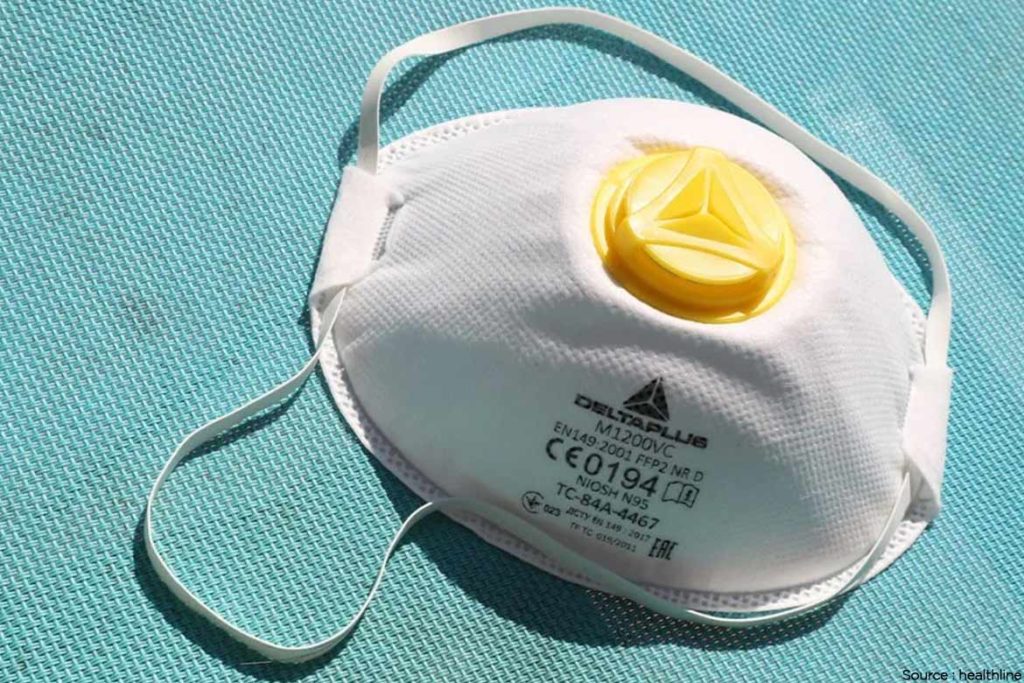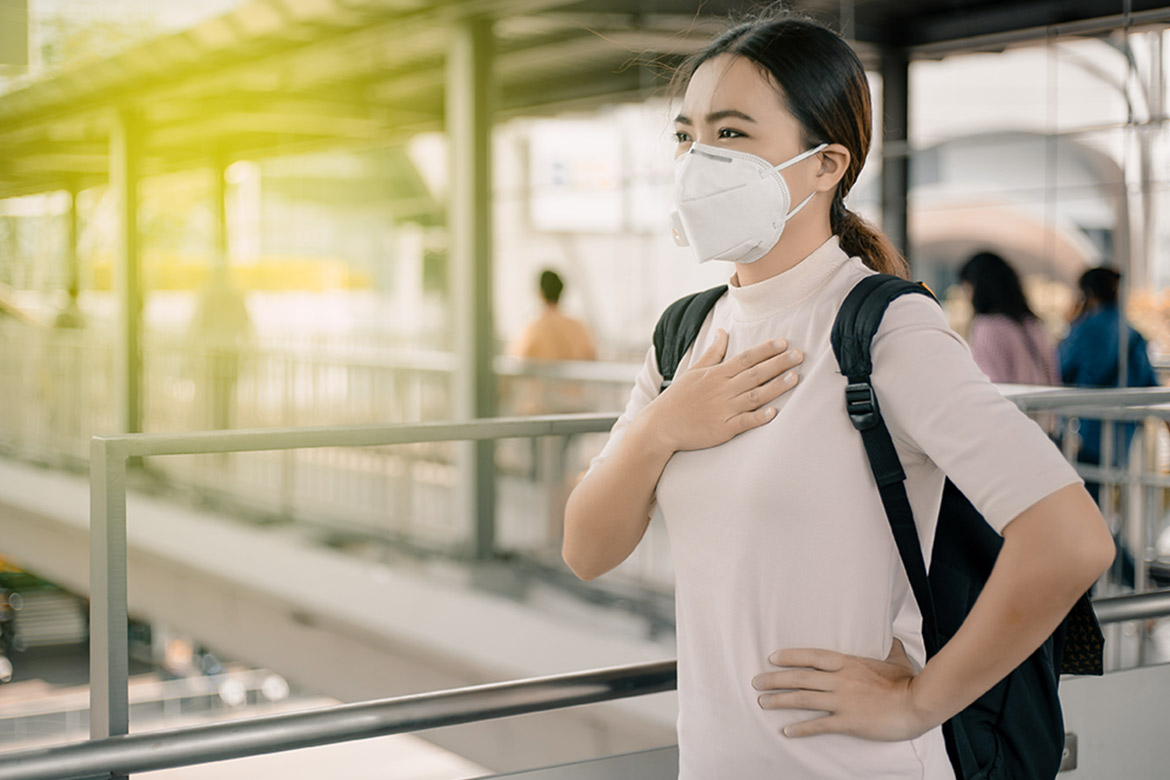Overview
N95 masks/ respirators provide a higher degree of protection than a surgical mask or cloth mask. They can filter out large as well as small particles when the wearer breathes. They’re called N95 masks because they’re designed to block 95% of minute particles or liquids that may come in contact with the face. N95 masks have valves that make them easier to breathe through as unfiltered air is released when the mask- wearer exhales. However, these masks should be reserved for healthcare workers and other front-line responders. They’re also incompatible with children or people with facial hair. Healthcare providers are fit tested for these masks to confirm a proper seal before using an N95 respirator in the workplace. N95 masks are intended to be single-use, though researchers are examining effective ways to clean these masks.

Also Read:-Role Of Women In The Family!
- Pros and cons of N95
- In March 2020, the soaring number of severe acute respiratory syndrome coronavirus 2 (SARS-CoV-2) infections resulted in a shortage of personal protective equipment or PPE kit for clinicians and frontline health care workers. The shortage was profound among N95 masks or N95 respirators. As the name suggests it can filter 95% or more of tiny 0.3-μm particles. N95 masks are the mainstay of protection against airborne pathogens. Airborne transmission occurring from contact with infectious particles contained within small (<5 μm) droplet nuclei or aerosols that can linger in the air for hours and be dispersed over great distances. SARS-CoV-2 is primarily spread by large (>5-10 μm) respiratory droplets that can be expelled up to 6 feet horizontally and drop to the ground within seconds. Surgical masks offer adequate protection against such viruses. Nonetheless, it is recommended that health care workers use N95 masks when in physical contact with patients with confirmed or suspected coronavirus (COVID-19) infection airborne transmission, particularly during exposure to procedures that produce high concentrations of aerosols (intubation, extubation, noninvasive ventilation).
- Several pieces of research have provided reassuring evidence of the performance of non-standard approaches to preserve the N95 mask supply. The laboratory-based evaluation of a broad array of non-standard face masks demonstrated that N95 respirators outperform alternatives in terms of filtration efficiency. Results of the study demonstrated that N95 masks reprocessed using ethylene oxide sterilization, as well as masks that are up to 12 years past expiration, maintain high filtration efficiency under laboratory conditions. N95 masks with suboptimal fit still had comparable filtration efficiency of more than 90%. Their KN95 counterparts performed less well, with filtration efficiency ranging from 53% to 85%. Surgical masks secured with either ties or ear loops also had much lower filtration efficiency of 37% to 69%, as might be expected by their comfortable, thinner filter and looser fit.

Also Read:-Can wearing masks stop the spread of the coronavirus?
- Although surgical masks have lower filtration efficiency than N95 respirators, observational studies have shown no significant benefit of N95 masks over surgical masks for the prevention of severe acute respiratory syndrome coronavirus 1 or other respiratory viruses. For health care workers, routine care of a patient with COVID-19 if both are wearing surgical masks is not considered to be a high-risk occupational exposure. SARS-CoV-2 viral particles have been identified in the air for several hours after an aerosolizing event simulated in a laboratory and near air vents in a clinical setting.
- A group of scientists recently signed an open letter urging the World Health Organization and other public health bodies to recommend additional precautions to protect against potential airborne transmission, highlighting several recent super spreading events in which SARS-CoV-2 transmission occurred in poorly ventilated areas. It raises concern for the possibility of SARS-CoV-2 airborne transmission. However, the viability and infectiousness of SARS-CoV-2 viral particles in aerosol form remain unknown. No documented SARS-CoV-2 outbreaks have been linked to settings in which surgical masks were assiduously used instead of N95 masks. It suggests that even if the airborne transmission is a considerable contributor to SARS-CoV-2 transmission, surgical masks are likely sufficient to prevent it. The infectious dose of virus required to cause clinical infection remains unknown. Hence, it is possible that blocking most, even if not all, viral particles through masks with lower filtration efficiencies of submicron particles is sufficient to prevent disease in the vast majority of cases.

- The effectiveness of any mask depends on its real-world use; variability in mask filtration during clinical care may fluctuate by mask adherence and fit than by marginal differences in laboratory-based filtration efficiency. When worn properly, N95 masks are suffocating, uncomfortable, and difficult to tolerate for long durations. Best practices for N95 use require intermittent, individualized fit testing, and a seal checks on donning. Mask fit varies by facial shape, and thus, once fit tested, ensuring fidelity to the same manufacturer and size is essential. Filtration efficiency of an N95 mask can also be compromised by even small amounts of facial hair in the area of the seal. Prolonged use of tightly fitting masks may result in facial bruising and abrasions, but bandages over these areas, such as over the nasal bridge, interrupt the mask seal. Although a recent clinical trial reported similar and suboptimal self-reported adherence between outpatient health care personnel randomized to wear N95 masks vs medical masks (89% vs 90%), the study also demonstrated no difference in cases of laboratory-documented influenza, a different respiratory virus between the two groups. Acknowledging that adherence is likely higher amid the COVID-19 pandemic, mask efficiency observed in the laboratory likely reflects an upper bound of the effect that would be observed in clinical settings.
Also Read:-Easiest Tips to Beat Weight Gain
- Beyond N95 laboratory-based efficacy and ensuring proper fit-tested use, costs have been a major challenge in the procurement of mask supply, with prices increasing in some cases up to 30 to 100 folds. While competition and price gouging for masks has certainly hindered access, supply has been the biggest problem. Reprocessed masks, which can cost up to 6 times the original price of the mask itself, are among the few solutions to continued inadequate supply. Until we have a better understanding of how filtration efficacy translates to improved protection against SARS-CoV-2 transmission, health care systems are left to pay high to keep their most valuable resources clinicians and health care workers safe.
- N95 masks and cloth masks have a one-way valve which helps to breathe easy. When the mask-wearer exhales, it releases unfiltered air. Hence, these masks are unable prevent the spread of the virus. This is the reason some places have banned these masks.

- Frontline clinicians and essential health care workers who engage in the highest risk procedures should be afforded the highest level of protection with N95 respirators. Reprocessed use and expired supply of N95 masks are safe and offer excellent alternatives to standard single-use N95 masks. Despite their low filtration efficiencies of submicron particles, surgical masks and N95 masks provide adequate protection against transmission for regular care. Considering together, the emerging data suggest that surgical masks and N95 alternatives will continue to keep clinicians and health care workers safe.
